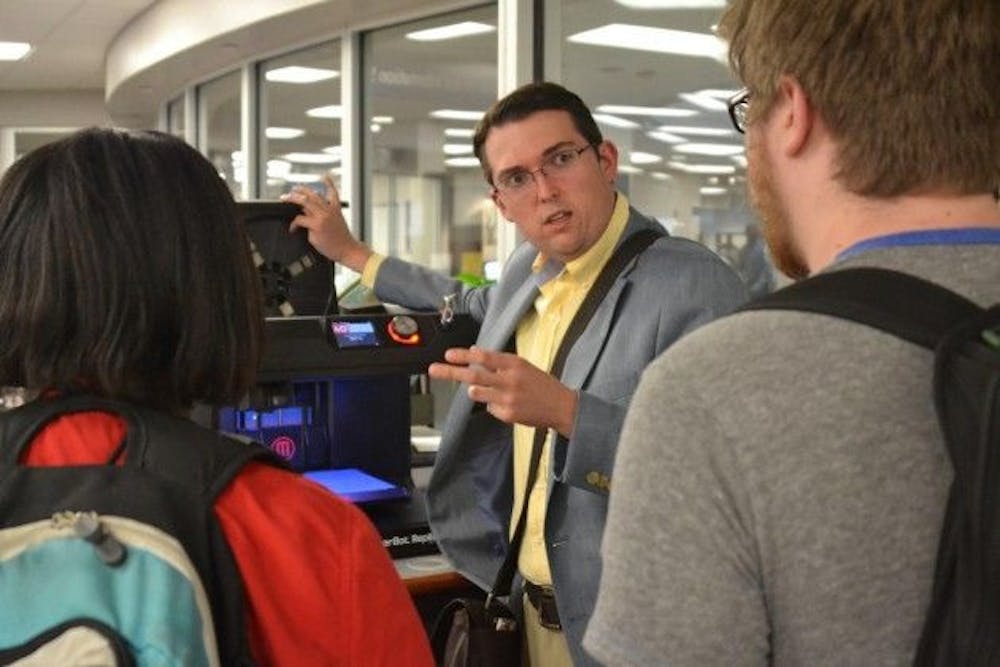Walking into the McWherter Library, students might hear the rhythmic R2D2-like beeping and buzzing of the MakerBot Replicator 3D printer, or see the sculptures, toys and tiger's heads fabricated from melted plastic, that sit beside it.
The 3D printer, which sits beside the Research and Information Services desk on the first floor, is one of two recently purchased printers that students can use without charge, Emerging Technologies Librarian Cody Behles said.
"Many schools will allow you to come up with a design and print it for you," Behles said while he demonstrated how to use the machine. "But they won't let you touch the 3D printer. Memphis is one of the only campuses where students can learn how to use these on their own."
Students are allowed to schedule up to four hours a week with the 3D printer. Behles teaches the 10-minute training course that must be completed before they are allowed to use the printer.
"Everyone must also sign a release form," Behles said. "It is actually pretty safe, but if you put your hand to close melted plastic you can burn your hand. Besides that, the printer is actually pretty straight forward."
Released in March of this year, the fifth generation 3D printer is faster and easier to use than any other made by MakerBot, according to the company's website. Behles said these were major reasons why this printer was chosen over the others.
"We want students to be able to create their works of art," Behles said. "On the library website, we have links to already made projects students can use. We even have downloads for three programs that will allow them to edit and build models. These things will be everywhere in the future, so it is better students get some practice with them now."
Although the library has the newest printer on campus, it is not the only one that students have access to. The Crews Center for Entrepreneurship carries the 3D Touch and Cubex Trio, both made by 3D Systems. Director of the Crews Center Mike Hoffmeyer said they are in the process of getting a third one.
"We are getting the MakerBot Replicator Z18," Hoffmeyer said. "It is much bigger than the two we have currently. We will roll it out at the University Center when we get it so students can see what it can do."
All 3D printing must be cleared by Hoffmeyer first. He requires student projects to promote "creativity, innovations or entrepreneurship." However, he did explain that they can encompass a large variety of ventures.
"We won't let people just print out toys," Hoffmeyer said. "We want students to work on prototypes that will hopefully be mass produced one day, but we have had some pretty fun things made here. We had students make jewelry and light up garments for a fashion show."
The Crews Center also advises students on a business model and design their project. Derrick Meyers, a mechanical engineering junior, will help turn student drawings into a 3D model.
"We show them how the programs run then we teacher them how to use it," Meyers said. "We will help a student do everything from 3D modeling on the Auto CAD program to circuitry of their product."
However, the title of first and most expensive 3D printer on campus goes to the Herff College of Engineering. The Alaris 30 made by Objet was purchased two years ago and cost approximently $35,000. It is also only available for students in the engineering program said associate Professor Thomas Banning.
"Robert Hewett really pushed for us to get this and he usually the only person allowed to physically operate it," Banning said while he picked up a white plastic crescent wrench. "It does amazing work. This tool has moving parts but was made all in one print."




